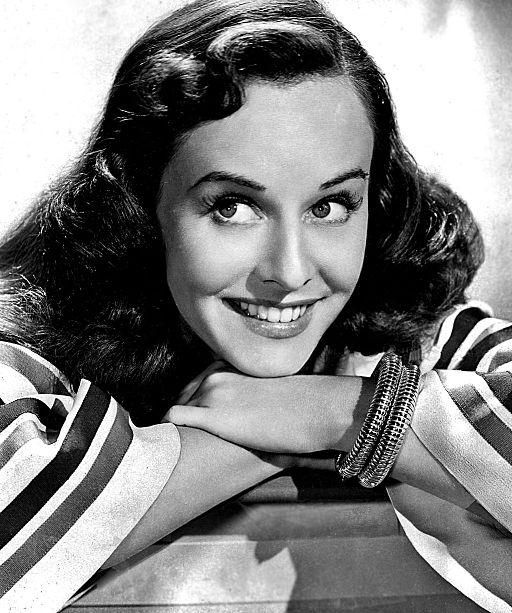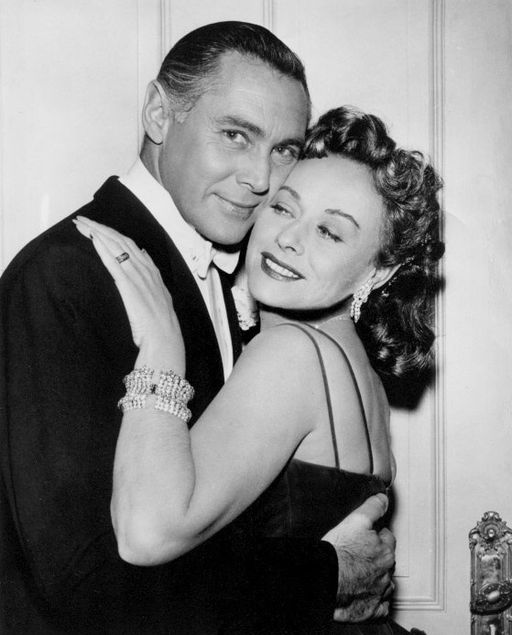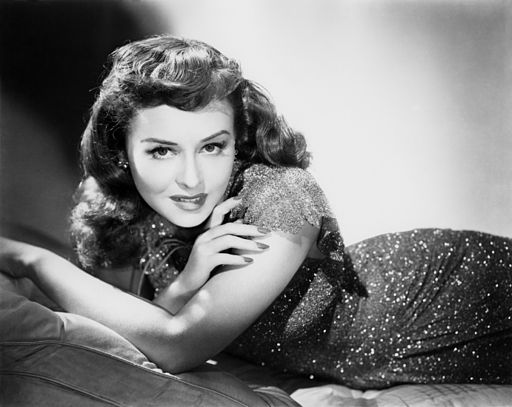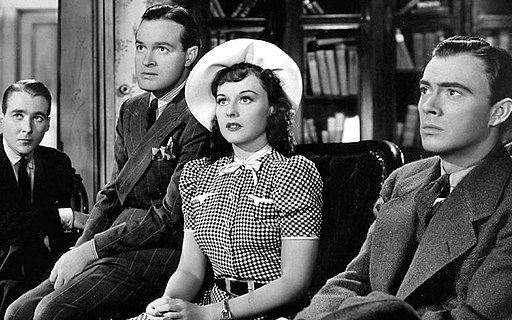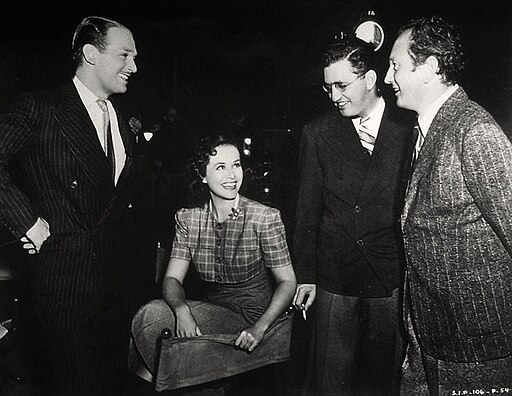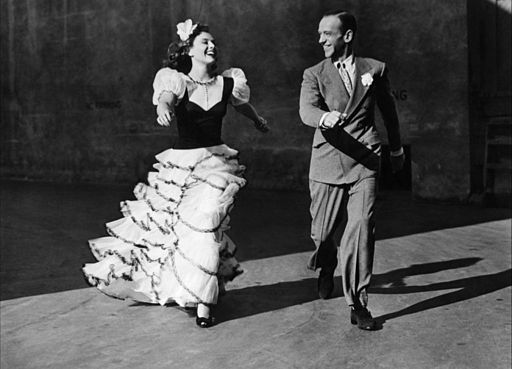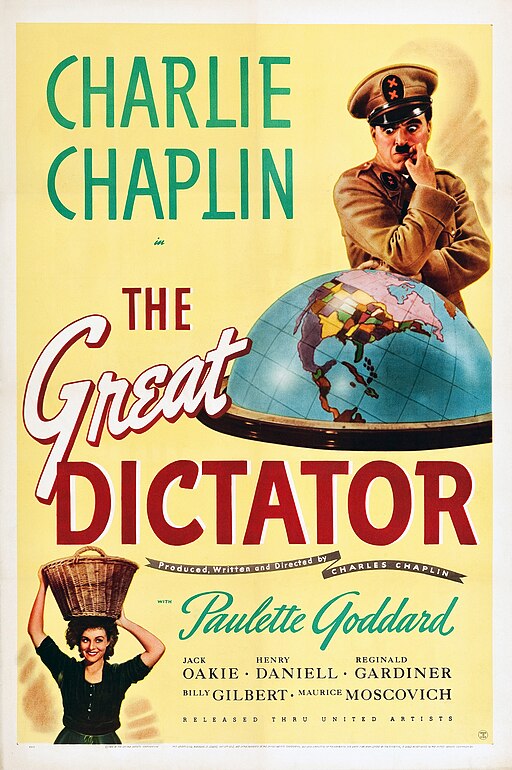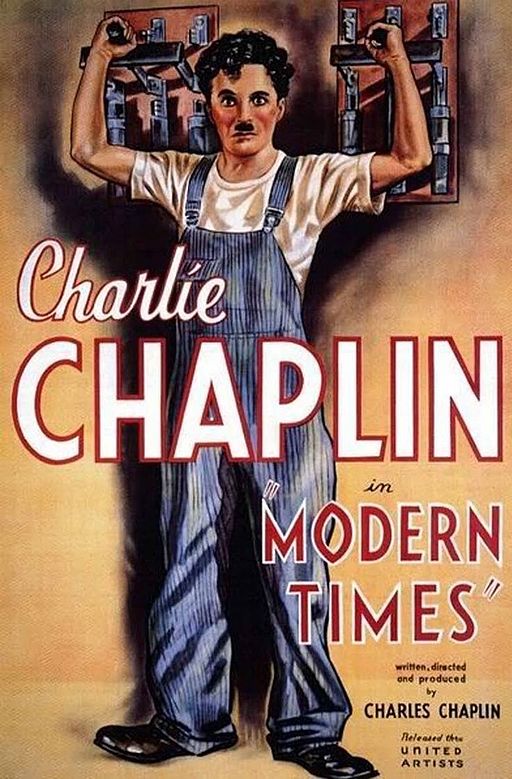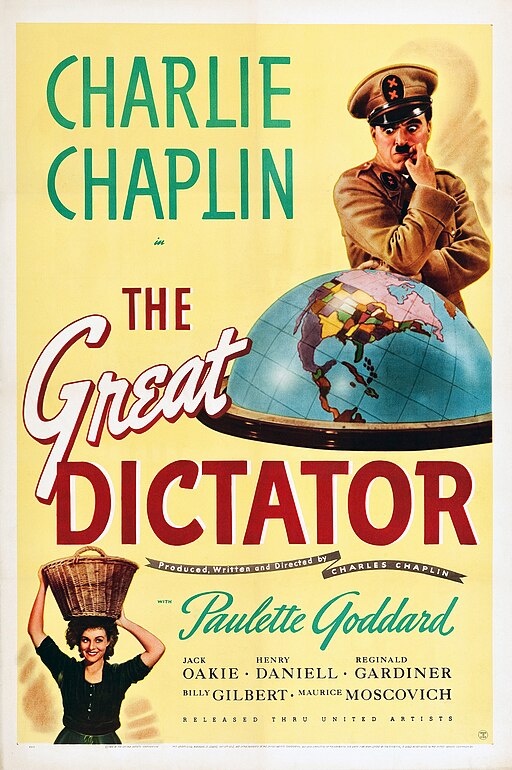Paulette Goddard
back| Full Name | Marion Pauline Levy |
| Stage Name | Paulette Goddard |
| Born | June 3, 1910 |
| Birthplace | Whitestone Landing, Queens, New York, USA |
| Died | April 23, 1990 |
| Buried | Ronco sopra Ascona Cemetery, Ronco sopra Ascona, Switzerland |
| Married to | Edgar James (1927–1932) - Charlie Chaplin (1936–1942) - Burgess Meredith (1944–1949) - Erich Maria Remarque (1958 until her death in 1990) |
| Children | None |
| Notable films | Modern Times (1936) - The Great Dictator (1940) - The Women (1939) - So Proudly We Hail (1943) - Kitty (1945) |
Paulette Goddard
Icon of the Golden Age of Hollywood
Born Marion Pauline Levy in 1910, Paulette Goddard rose from a modest background to become one of the most captivating stars of her era. Her career began in the 1920s with work as a fashion model and in Broadway productions, which eventually led her to Hollywood.
Her breakthrough role came in Charlie Chaplin's "Modern Times," where her charm and vivacity captured the audience's attention. This film marked the beginning of both a professional and personal relationship with Chaplin; they married in 1936 but divorced in 1942.
Goddard's career flourished in the 1940s, with significant roles in films such as "The Women" and "So Proudly We Hail!", the latter earning her an Academy Award nomination. Her versatility as an actress was evident in her ability to excel in both comedic and dramatic roles.
Related
Paulette Goddard
Biography and Analysis of her Career
Paulette Goddard's life was as vivid and fascinating as her on-screen performances. Let's delve into her complete biography, encompassing her personal life, early years, path to success, marriages, passions, and her final years.
Born as Marion Pauline Levy on June 3, 1910, in Whitestone Landing, Queens, New York, Paulette Goddard grew up in a tumultuous household. Her parents separated when she was young, and she spent much of her childhood relocating between relatives and boarding schools. This instability in her early life likely fueled her independence and resilience.
Goddard's foray into the entertainment world began in her teens. She worked as a fashion model and appeared as a Ziegfeld Girl in the famed Ziegfeld Follies on Broadway. Her beauty and charisma soon caught the attention of Hollywood, leading her to move to the West Coast to pursue a career in films.
In Hollywood, Goddard started with small roles, gradually working her way up. Her big break came with Charlie Chaplin's film "Modern Times" in 1936, where she played the gamin. Her performance was both charming and poignant, establishing her as a talented actress. She continued to work with Chaplin in "The Great Dictator" (1940), further cementing her place in Hollywood.
Throughout the 1940s, Goddard starred in various successful films, showcasing her versatility in both comedic and dramatic roles. Her performance in "So Proudly We Hail!" (1943) was particularly noteworthy, earning her an Academy Award nomination.
Marriages and Personal Life
Goddard's personal life was as eventful as her career. She married four times, each to notable men. Her first marriage was to Edgar James in 1927, which ended in divorce. Her most famous marriage was to Charlie Chaplin in 1936. The couple's relationship was a blend of personal and professional collaboration, but they divorced in 1942 amid much public attention.
After Chaplin, Goddard married actor Burgess Meredith in 1944. This marriage, too, ended in divorce in 1949. Her final and longest marriage was to the renowned novelist Erich Maria Remarque in 1958. They remained married until her death.
Apart from acting, Goddard was known for her love of art and literature, reflecting her sophisticated and cultured personality. She was an avid art collector and had a profound appreciation for fine jewelry, a passion that was evident in her personal style.
Final Years and Death
In her later years, Goddard lived primarily in Switzerland with her husband, Remarque. She continued to act sporadically, but her career had slowed down considerably. She lived a relatively private life until her death on April 23, 1990.
Goddard passed away due to heart failure at the age of 79 in Ronco, Ticino, Switzerland. She was buried in Ronco sopra Ascona Cemetery, leaving behind a legacy as a glamorous, talented, and enduring figure in the Golden Age of Hollywood.
Paulette Goddard Video Biography:
Analysis of the Acting Style of Paulette Goddard:
Paulette Goddard's acting style was a captivating blend of charisma, versatility, and a natural flair for both comedy and drama. Her performances were marked by a distinctive presence that combined old Hollywood glamour with a sense of modernity and independence, making her one of the memorable stars of her era.
Charismatic Screen Presence: Goddard had an undeniable charm and charisma that shone through in her roles. She possessed a radiant screen presence that could easily shift from playful and mischievous to sophisticated and elegant. This magnetic appeal made her a favorite among audiences and directors alike.
Versatility: One of the defining aspects of Goddard's acting was her versatility. She was adept at both drama and comedy, a rare skill that allowed her to navigate a wide range of genres throughout her career. From the comedic gamin in "Modern Times" to the more serious roles in films like "So Proudly We Hail!", Goddard showcased an ability to adapt her style to the demands of each role.
Comic Timing and Expressiveness: In her comedic roles, Goddard displayed excellent timing and a knack for physical comedy, often imbuing her characters with a sense of vivacity and wit. Her expressiveness, both facial and bodily, added depth to her performances, making her a natural fit for the films of Charlie Chaplin and other comedy classics.
Dramatic Depth: When it came to dramatic roles, Goddard brought a depth of emotion that was both subtle and powerful. She had the ability to convey complex emotions through subtle gestures and expressions, giving her characters a sense of authenticity and relatability.
Modern Woman Persona: Goddard often portrayed strong, independent women, reflecting the changing attitudes towards women in society at the time. Her characters were often ahead of their time in terms of their independence, resilience, and complexity, resonating with the evolving role of women in the 20th century.
On-Screen Adaptability: Her on-screen adaptability was another hallmark of her style. Goddard was equally at home in lavish period dramas as she was in contemporary settings. This adaptability not only showcased her range as an actress but also helped her maintain a successful career over several decades in Hollywood.
Naturalism and Authenticity: Despite the dramatic nature of many of her roles, there was a sense of naturalism in her performances. Goddard had the ability to make scripted lines seem spontaneous and genuine, a quality that endeared her to audiences and made her performances feel authentic and believable.
Memorable Quotes from Paulette Goddard:
On Her Career Choices: "I've always taken the road less traveled and I continue to leap before I look."
On Success and Happiness: "I lived by the stars as an actress, and did what I wanted, when I wanted."
Reflecting on Life: "Life's too short to be a Goody Two-Shoes."
On Self-Confidence: "I think I've always had a certain amount of skepticism of this whole 'sheltered' aspect of life that some people have, I always go back to that wonderful line of Emerson's, that 'If I have lost confidence in myself, I have the universe against me.'"
On Her Approach to Life: "I'm not afraid. I never liked long last acts.
Spouses Paulette Goddard:
- Edgar James (1927–1932): Goddard's first marriage was to lumber tycoon Edgar James when she was just 17 years old. This marriage was short-lived and ended in divorce. It was during this time that she began her career in the entertainment industry, starting with modeling and moving to acting.
- Charlie Chaplin (1936–1942): Her marriage to the iconic actor and director Charlie Chaplin was perhaps the most publicized. They met during the production of "Modern Times," and their relationship evolved into both a personal and professional partnership. They married in 1936. This period was significant for Goddard's career as it marked her breakthrough in Hollywood. However, the marriage ended in 1942 amidst Chaplin's growing professional challenges and personal controversies.
- Burgess Meredith (1944–1949): Following her divorce from Chaplin, Goddard married actor Burgess Meredith in 1944. Meredith was an established actor with a robust career in film and theatre. Their marriage lasted for five years, during which they appeared together in a couple of films, including "Second Chorus." However, like her previous marriages, this one too ended in divorce.
- Erich Maria Remarque (1958–1970): Goddard's fourth and final marriage was to German novelist Erich Maria Remarque, best known for his novel "All Quiet on the Western Front." They married in 1958 and remained together until Remarque's death in 1970. This marriage was her longest and is often considered her most stable relationship. During this time, Goddard became less active in Hollywood and lived primarily in Switzerland.
Goddard's marriages to these famous men were significant not only for their high-profile nature but also for how they intersected with and influenced her career and public image. Her relationships, particularly with Chaplin and Remarque, kept her in the public eye and connected her with pivotal figures in the worlds of cinema and literature.
Significance of her Role in “Modern Times”:
"Modern Times," released in 1936, was a significant milestone in Paulette Goddard's career for several reasons:
- Breakthrough Role: "Modern Times" was Goddard's first major film role and served as her breakthrough in Hollywood. Prior to this film, she had appeared in smaller roles and bit parts. In "Modern Times," she played the female lead opposite Charlie Chaplin, which brought her considerable attention and acclaim.
- Working with Charlie Chaplin: The opportunity to work with Chaplin, one of the most influential figures in the film industry, was a major boon for Goddard's career. Chaplin was not just a renowned actor and director but also a meticulous filmmaker with a clear vision. Working closely with him gave Goddard invaluable experience and exposure.
- Critical and Commercial Success: "Modern Times" was both a critical and commercial success. The film is considered one of Chaplin’s masterpieces and a classic of early American cinema. Being part of such a successful and enduringly popular film significantly boosted Goddard's profile in the industry.
- Showcasing Versatility: In "Modern Times," Goddard showcased her ability to blend comedy and drama effectively. Her performance as the Gamin was spirited and heartfelt, displaying her range as an actress. This versatility would become a hallmark of her career.
- Establishment as a Leading Lady: This role firmly established Goddard as a leading lady in Hollywood. It opened doors for more substantial roles in major productions, paving the way for her future successes in films such as "The Great Dictator," "The Women," and "So Proudly We Hail!".
- Transitioning to Talkies: "Modern Times" was one of the last great silent films, even though it was produced well into the era of sound films. Goddard’s performance demonstrated her ability to transition effectively into talking pictures, a crucial skill as the industry moved away from silent cinema.
- Personal Relationship with Chaplin: Professionally, this film marked the beginning of her collaboration with Chaplin, and personally, it marked the start of their relationship, leading to their marriage in 1936. This relationship further kept her in the public eye and connected her with one of the most significant figures in cinematic history.
In summary, "Modern Times" was a pivotal film for Paulette Goddard, significantly impacting her career trajectory. It showcased her talent to a wide audience, established her as a leading actress in Hollywood, and aligned her with one of the era's most influential filmmakers.
Awards and Recognition:
Academy Awards (Oscars)
- 1944: Goddard received her first and only Academy Award nomination for her performance in "So Proudly We Hail!" in the category of Best Supporting Actress. This nomination was a testament to her dramatic skills and her ability to hold her own alongside her fellow actors in a war drama.
Venice Film Festival
- 1949: She won the Volpi Cup for Best Actress at the Venice Film Festival for her role in "The Torch." This award was particularly significant as it recognized her talent on an international stage, showcasing her appeal and skill to audiences and critics beyond Hollywood.
Aside from these, while Goddard was a celebrated actress of her time, much of her recognition came from her enduring popularity with audiences and her status as a Hollywood icon, rather than from a long list of awards and nominations.
Movies featuring Paulette Goddard:
- "Berth Marks" (1929)
- "The Locked Door" (1929)
- "City Streets" (1931)
- "The Girl Habit" (1931)
- "Ladies of the Big House" (1931)
- "The Mouthpiece" (1932)
- "Show Business" (1932)
- "Pack Up Your Troubles" (1932)
- "The Kid from Spain" (1932)
- "Girl Grief" (1932)
- "Young Ironsides" (1932)
- "Too Much Harmony" (1933)
- "Roman Scandals" (1933)
- "Kid Millions" (1934)
- "Modern Times" (1936)
- "The Bohemian Girl" (1936)
- "Dramatic School" (1938)
- "The Young in Heart" (1938)
- "The Women" (1939)
- "The Cat and the Canary" (1939)
- "The Ghost Breakers" (1940)
- "North West Mounted Police" (1940)
- "The Great Dictator" (1940)
- "Second Chorus" (1940)
- "Pot o' Gold" (1941)
- "Hold Back the Dawn" (1941)
- "The Lady Has Plans" (1942)
- "The Forest Rangers" (1942)
- "Reap the Wild Wind" (1942)
- "Star Spangled Rhythm" (1942)
- "The Crystal Ball" (1943)
- "So Proudly We Hail!" (1943)
- "Standing Room Only" (1944)
- "I Love a Soldier" (1944)
- "Duffy's Tavern" (1945)
- "Kitty" (1945)
- "The Diary of a Chambermaid" (1946)
- "Suddenly, It's Spring" (1947)
- "An Ideal Husband" (1947)
- "Variety Girl" (1947)
- "Unconquered" (1947)
- "On Our Merry Way" (1948)
- "Hazard" (1948)
- "Bride of Vengeance" (1949)
- "Anna Lucasta" (1949)
- "The Torch" (1950)
- "Babes in Bagdad" (1952)
- "Sins of Jezebel" (1953)
- "Vice Squad" (1953)
- "Paris Model" (1953)
- "Charge of the Lancers" (1954)
- "The Unholy Wife" (1957)
- "Time of Indifference" (1964)

